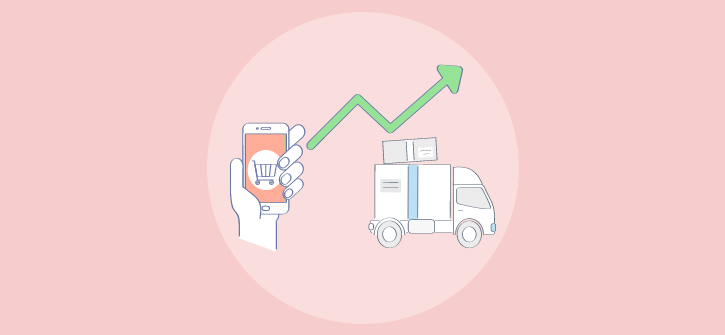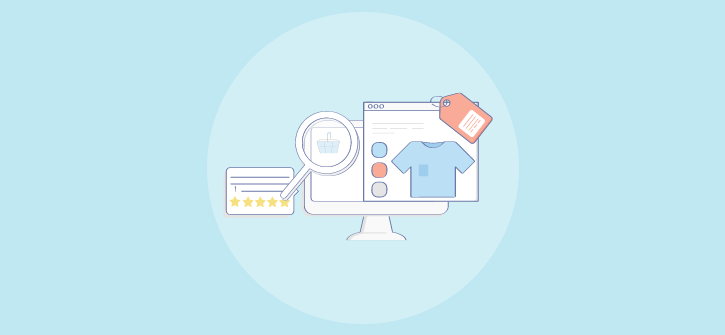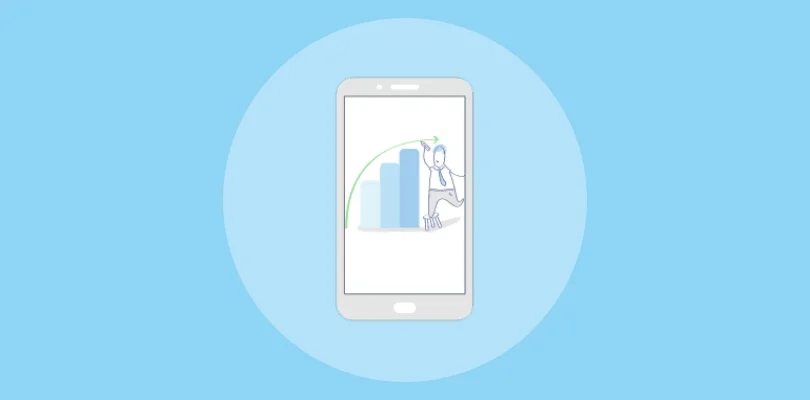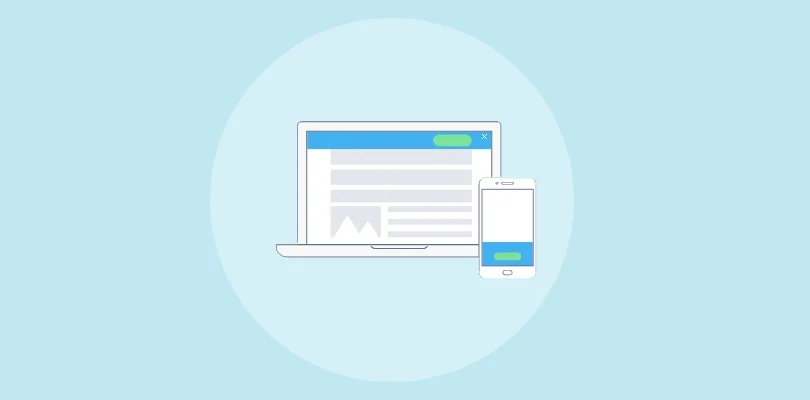Businesses spend a lot of time and money establishing their online presence. It is a long process, from creating an engaging website with good digital content to running ad campaigns to bring in traffic.
With what goal? To increase conversions and make sales eventually.
But imagine that visitors knock on your door after checking out your ad and browse your vast catalog of products, wishlist them, and add them to the cart.
The next thing they do is exit your store. Ouch, shopping cart abandonment! That hurts.
On average, seven out of ten online shoppers abandon their carts. That’s a lot of lost revenue and marketing efforts going in vain.
Fortunately, with the help of the right abandoned cart strategies and tactics, you can significantly reduce your cart abandonment rate.
Before we jump into the tips and tactics, there are some other things that businesses should know about. We will be covering it all in this guide.
What is Shopping Cart Abandonment?
Shopping cart abandonment occurs when customers add items from your store to their carts but leave the website or cart before completing checkout and purchase. It is a crucial business metric, especially for e-commerce businesses looking to increase conversion rates.
A high shopping cart abandonment rate means you are losing a lot of leads, opportunities, and revenue.
This rate usually indicates something wrong with your checkout process or user experience. Before checking the potential reasons, let’s see how you can calculate your shopping cart abandonment rate!
How to Calculate Shopping Cart Abandonment Rate of Online Store?

You can use this formula to calculate your shopping cart abandonment rate:
Here’s how it works: Let’s say that 100 customers created carts by adding items. Only 40 of these completed the purchase. So, the cart abandonment rate is 60%.
And yes, it is a worrying sign. Businesses should constantly strategize to reduce online shopping cart abandonment.
Top 5 Reasons for Shopping Cart Abandonment
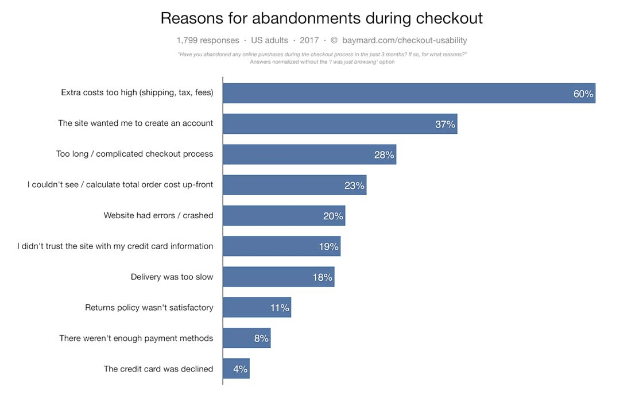
Before bringing down the abandonment rate, you need to understand and identify why shoppers are leaving your store. Below are the top 10 shopping cart abandonment reasons.
1. Too High Shipping Cost & Additional Cost
High shipping charges and hidden costs are the leading reason for abandonment. A significant change in the final price with hidden costs like taxes, delivery fees, etc., results in immediate cart abandonment.
2. Complicated Checkout
The long and complicated the process is, they are likely to switch to another website for a better user experience. That’s why many online businesses focus on one-step checkout, asking only the relevant information with minimalist design and content.
3. Limited Shipping Options & Long Delivery Time
Delivery time and shipping options are essential in online shopping. Customers expect a reasonable delivery time and multiple shipping options like standard delivery, express delivery, same-day delivery, etc.
4. Unclear Return Policy
With unclear return/replacement policies, customers have doubts regarding the purchase, leading to shoppers shifting to competitor websites with better return policies.
5. Limited Payment Methods
Online wallets, card payments, bank transfers, crypto payments, etc., have gained popularity in this digital era. If shoppers don’t find the payment mode they prefer, they might abandon their cart.
21 Proven Tips to Fight Shopping Cart Abandonment
Now that you know the possible reasons for customers leaving your website and their cart, it’s time to uncover cart abandonment solutions that’ll help you overcome this obstacle in your sales.
1. Use Exit-Intent Popups
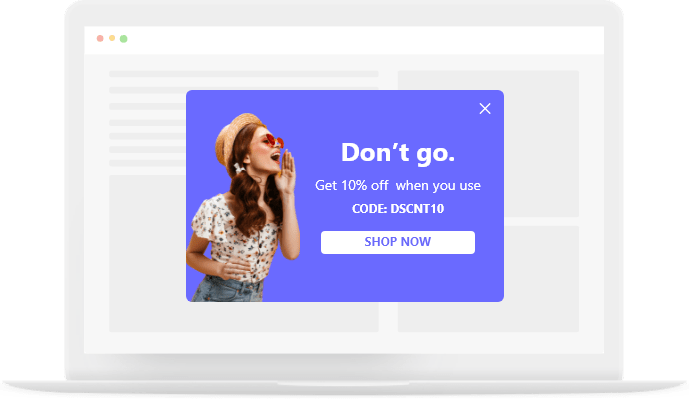
Implementing exit-intent popups can significantly reduce shopping cart abandonment.
You can target the visitors abandoning their shopping cart by addressing their issues. By offering free shipping codes, discount coupons, flash sales, and deals, you can grab your shoppers’ attention to continue shopping.
Kitchen Cabinet King uses Picreel’s exit-intent popups, and the results are right in front of you. With a shopping cart recovery rate of around 27%, they are using popups to reduce cart abandonment.
As the visitor has decided to leave your website, a popup when they are about to leave won’t disrupt their user experience, and that’s why this tactic works a lot.
2. Enable Guest Checkout
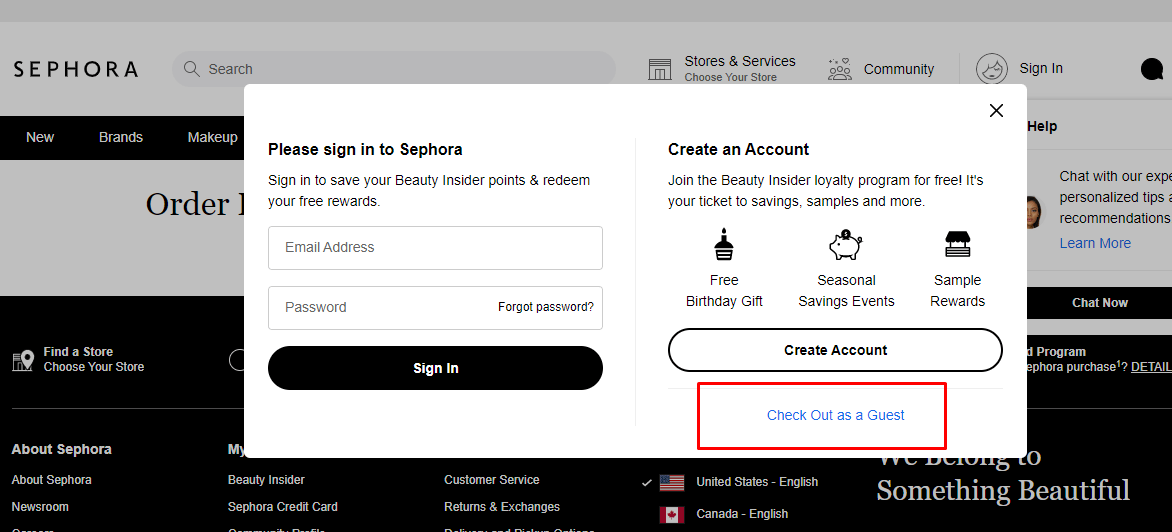
First-time visitors are often not interested in making an account before purchasing. If shoppers are leaving your website after you ask them to create an account, it is time for you to enable a guest checkout option to improve sales.
With the help of the guest checkout option, you will be simplifying the buying process, which is what customers want. With a frictionless online shopping experience, you will likely attract these shoppers again in the future.
Also, once the purchase is complete, you can show a popup to create an account. Display benefits like loyalty points, discounts, and other incentives.
3. Be Transparent About Costs
Shoppers get frustrated when they see additional costs like taxes, shipping fees, packing charges, etc., on the checkout page.
They don’t trust the product anymore and will look for competitors’ websites to get the product at a lower final price.
So, always be transparent with your prices right from the product page. Display your shipping fees and mention the final price on the product page.
It won’t present a surprise during the checkout process, and shoppers will be more comfortable purchasing after knowing the price.
4. Offer and Highlight Discounts Prominently
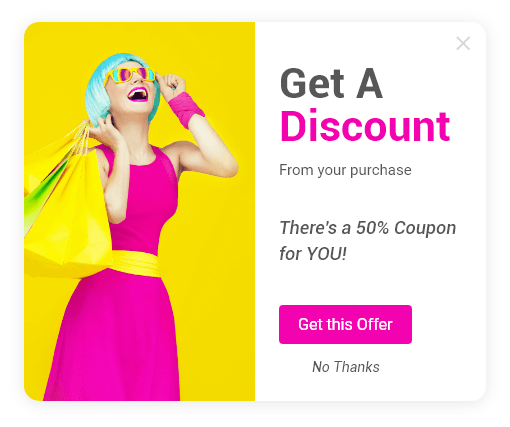
Discounts are excellent motivators to bring the customers back to the shopping cart. You may not have a discount when they add products to the cart, but they sure will appreciate it if they already have a cart filled with their picks.
One possible reason customers abandon their cart might be the price of the products, so offering discounts takes care of that problem.
Pro Tip: Try highlighting your discount coupon or code with bright colors since they instantly grab customers’ attention.
5. Create a Sense of Urgency
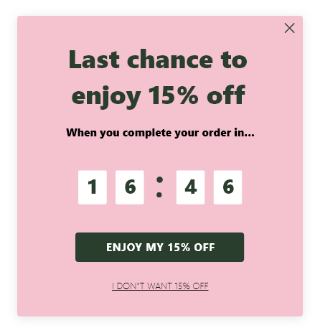
Another famous strategy many eCommerce businesses use to reduce cart abandonment is to create a sense of urgency.
If you are running a special discount campaign or are giving a promotional offer, display that with a countdown timer so that shoppers realize that the discounted price won’t last forever.
You can add the countdown timer to your popups and nano bars. It creates urgency for all the website visitors and motivates them to finish their purchases.
Try not to use this tactic too often, as it decreases the credibility of your offer. It is suitable for occasions like Black Friday, Cyber Monday, etc.
6. Offer Free Shipping & Upgrade to Priority Mail
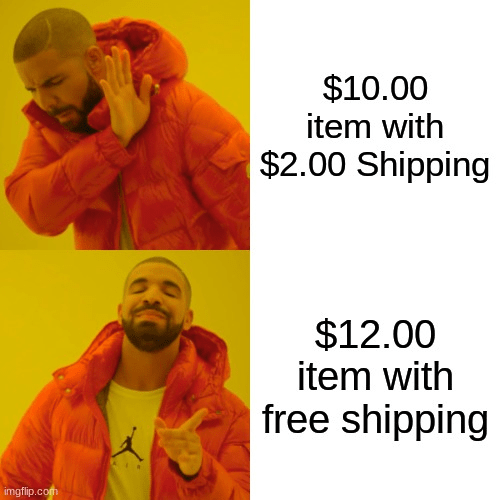
For first-time buyers, you can run a free shipping campaign on your website and offer priority mail.
It is a good marketing tactic and creates a huge psychological difference when customers get to the checkout page. On the other hand, high shipping costs can be the reason behind cart abandonment.
You can auto-apply the free shipping code when the shopper reaches the checkout page. Make sure to use popups (like shown below) and nano bars (like shown above) to keep the shoppers informed about your free shipping campaign.
It will incentivize your shoppers to go to the cart and complete their purchases.

7. Add Progress Indicator on Checkout Pages
On the first page, you ask for personal details. Next, you ask for shipping information. On the next, you ask to sign-up and open an account. Then, you ask for payment details.
Frustrating, right? That’s how the shopper feels on checkout pages. The best way to do this is by including the progress indicator on the top of your checkout page.
Even then, try to avoid a lengthy checkout process of more than three steps. Ideally, online shoppers love a fast checkout.
Keep it as short as possible and highlight the process as a single-step or two-step checkout. The shopper will know where they stand in the line.
8. Show Thumbnail Images of Items In the Cart
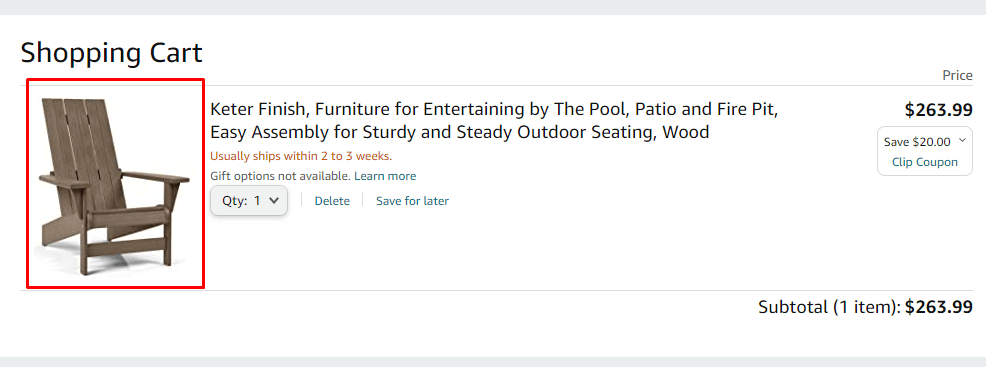
Shoppers often visit multiple online stores and add items to their shopping cart. There is surely a chance of them forgetting what they have added to their cart.
So, including thumbnail images alongside product name and price is a great way to reassure the customer of what they are purchasing from your store.
With this technique, you are helping the shoppers and eliminating the possibility of distraction, which might be the reason behind cart abandonment.
By seeing the thumbnails of products on the checkout page, there won’t be a moment of hesitation about what shoppers are buying.
9. Practice Personalization
Many shoppers take some time to decide whether to place an order or exit the website after adding products to their cart.
With the help of well-timed popups, you can use this time as an opportunity to personalize your campaigns for communication on a deeper level.
Address the customers by name or location along with the product image of what they added to the cart.
With a beautiful popup design, you can show them a personalized message to promote special offers or remind them of the benefits of your product to convey what they are missing out on.
10. Offer Live Chat Support
The better the customer support and guidance, the more delightful shoppers will be on your website. You can integrate live chat on your site to offer help and guide visitors to the right products and content.
By tracking your shoppers’ average scrolls/clicks and activities through heatmap, you can identify the areas where shoppers are likely to drop off.
At that point, your support reps can come up to ask for shoppers’ pain points and address the same to reduce cart abandonment.
Make sure to configure the chat widget to pop at the right time without disrupting the user experience.
11. Offer Various Payment Gateways
Offering limited payment options is one of the leading reasons for shopping cart abandonment. It creates an unnecessary obstacle between you and shoppers.
With the increasing popularity of digital wallets like PayPal, Apple Pay, Google Pay, and so on, many shoppers don’t prefer credit cards these days.
As per your target audience, you can offer support for popular payment options such as cards, wallets, direct bank transfers, and so on.
Also, if you sell high-value products, try considering customer financing options because if shoppers have the flexibility to make the payment in installments, that will drive sales.
12. Up-sell & Cross-sell
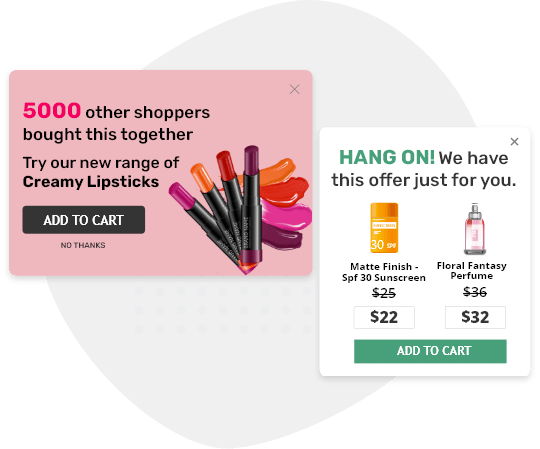
When the shopper has made up their mind to purchase a product by adding it to the cart, you can guarantee the purchase by displaying relevant product recommendations.
Incentivize the complete purchase at a discounted price, and you can sell items of more value to the shoppers.
You can use popups and dedicated bars on the checkout page to cross-sell and up-sell by grabbing visitors’ attention.
You can even put up numbers and reviews to promote other items like “10000+ shoppers purchased this together” or “5000+ shoppers found this useful”.
13. Create a Dedicated Cart Page for Mobile Users
More than half of online shoppers browse from mobile devices, making it indispensable for you to have a mobile-friendly website. Start with a responsive design and ensure that your shopping cart is easy to navigate.
Cut out unnecessary form elements as these feel irritating on tiny screens. Focus on the critical part and make the experience smooth and fast.
Invest in quality hosting so your web pages load quickly within two seconds and use optimized images plus content to boost your site’s speed.
Integrate mobile-friendly payment options that offer a one-tap payment option to streamline your checkout process.
14. Push Notifications and In-App Messages As Reminders

All is not lost even when customers leave your website or mobile app. You can always bring them back using push notifications and in-app messages.
Push notifications have repeatedly proven to be an effective cart abandonment strategy.
If the visitors have left the app/website, then you can retarget by sending them push notifications like “Your cart is missing you.” It will work as a reminder and motivate them to come back to their selected products and complete the transaction.
They will land straight on the checkout page as they click the notifications.
Besides, if your customers have come back but still haven’t made the purchase, you can send in-app notifications as a reminder while offering them a discount or free shipping as a motivator.
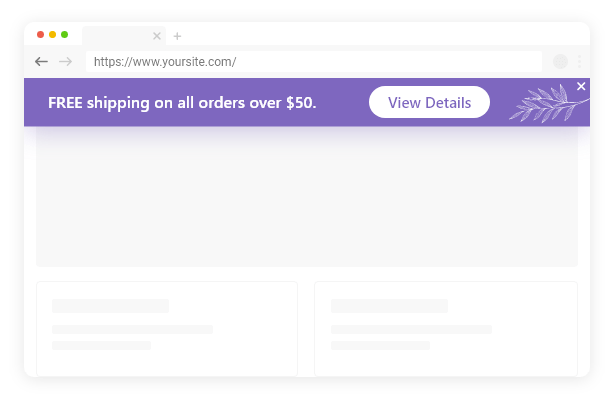
15. Leverage email and SMS remarketing
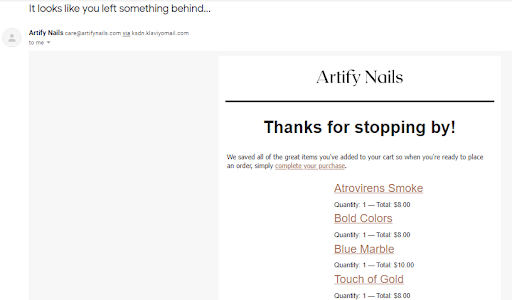
Another cart abandonment retargeting tip up our sleeve is Email and SMS remarketing.
Email remarketing: You can always send a personalized email to abandoning customers and remind them of their cart. You have a shot to bring the business back since the open rate for emails for the ECommerce industry is 15.68%, which is considered excellent. It’s crucial to collect emails from customers during their shopping experience, as this allows you to reach out later.
Now, the question is – “What’s the right time to send a cart abandonment email?”
It’s best to send this email after an hour of customers abandoning their carts. And while you’re at it, you might as well throw in some irresistible deals and discounts to increase your chances.
SMS remarketing: Since people spend an average of 4.8 hours a day on their mobile devices, your SMS retargeting has a chance to win your customers back.
You can send them a direct link to their cart rather than your home page. This way, you avoid the risk of distracting your customers.
16. Retargeting ads on social media

You must have seen ads for products you checked out a while ago as you scroll through your social media.
These are retargeting ads where brands target you with the products you already know and want instead of showing new ones.
You can do the same to retarget the customers who abandoned the cart by showing such ads on their social media using cookie data.
With these ads, you are not disrupting their mobile experience by asking them to open a different app since they will be redirected from social media with just a click.
17. Make It Easy to add/remove products during checkout
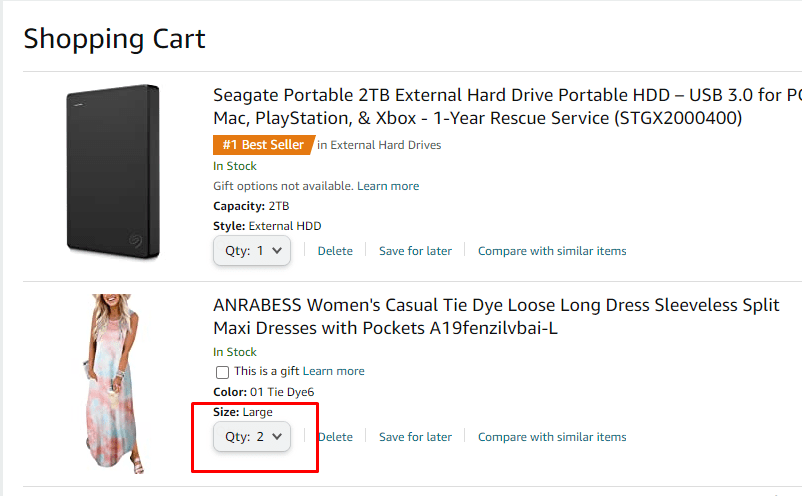
Many customers churn and abandon their carts if they think the checkout process is tedious or complicated. They’ll leave if they can’t find a way to remove/add products from the cart.
So, it’s best to make it easier for the customers to add extra items, remove products they don’t want, and adjust the quantity straight from the checkout page. It will save them a trip to your homepage to look for the desired products.
18. Leverage Cart Carrots
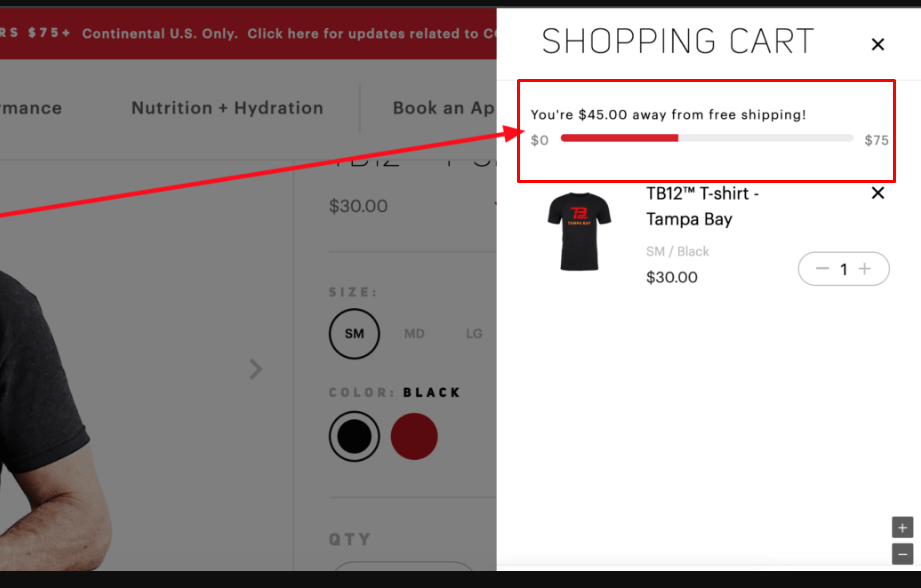
Cart carrots are small monetary benefits you offer as the customers are ready to checkout to either tempt them to buy a little more or complete the transaction as quickly as possible.
For example, you can ask the customers to add a few more items for a specific amount to avail of free shipping (as shown in the image).
Another way is to create urgency like Amazon does with its ‘Lightning Deals’ where you can get a specific product at a discounted price if you buy it within 15 minutes.
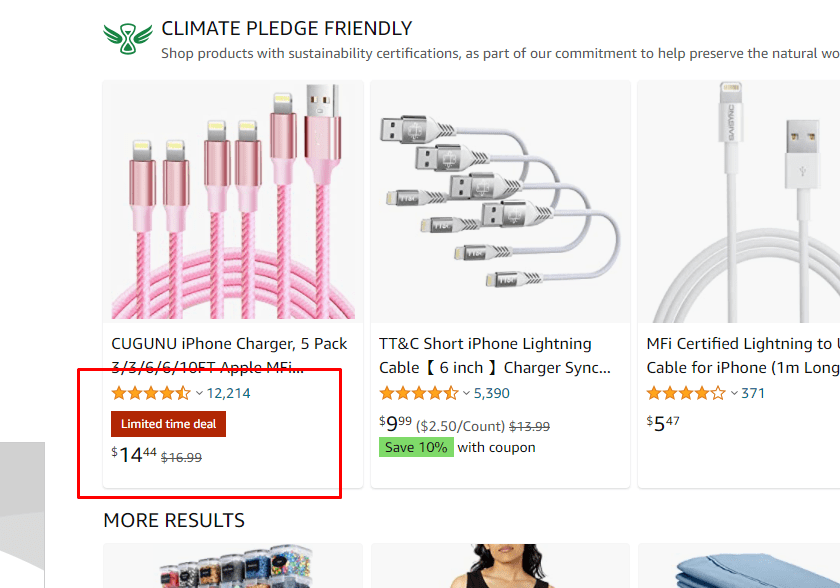
19. Use a Unique & Full-screen Popup
Popups are effective in attracting customers’ attention. They will be even more prominent if you use them as a full-screen popup. You can mix-match and experiment around with different popups to keep things engaging.
Make sure to design unique popups with colors that attract customers to click on the CTAs.
20. Establish Trust Using Security Badges
Many customers don’t shop from websites or apps they don’t trust. It is common among first-time customers who aren’t familiar with your brand. In that case, you can put their worries at ease by showing security badges that build trust.
You should let your customers know the transactions are secure through a trusted third-party platform that protects their sensitive information. Trust badges also come with an SSL certificate, which may be multi-domain or wildcard SSL or any other type of SSL (depending upon the site’s requirement). Trust badges can be static or dynamic as per SSL you select and install on the server.
So, if you have churned customers that gave up on you because of this, they will come back to get the products.
21. Use A/B Testing Methods
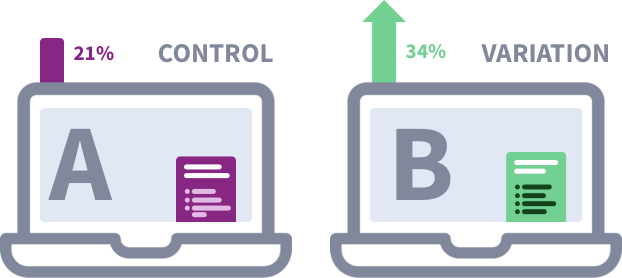
The final step is to test your site according to your implemented changes. A/B testing is the key to increasing conversions, reducing cart abandonment, and checking what works best with your target audience.
Make the changes to your checkout pages one by one using different tools, forms, designs, images/logos, CTAs, payment options, and so on.
Check for the results to see which element performs better. It will surely help you fight the shopping cart abandonment effects.
Boost Sales and Conversions With the Right Implementation
Here’s something controversial that makes perfect sense: The main goal is not only to reduce cart abandonment but also to increase conversions and sales. So, it’s best to focus on retaining and engaging customers to convert them.
And to do that, you need to know the reasons for abandoned carts and implement cart abandonment solutions that work. You can perform A/B tests on your checkout page and discover what works for you and what doesn’t.
You’ll be able to reduce your abandonment rate and boost your sales with the cart abandonment strategies you read above if you implement them the right way.
And to do that, you can immediately start with your ECommerce abandoned cart strategy using Picreel.
It displays AI-powered popups to shoppers, among other things that help you execute your strategies. So, leverage the power of this conversion optimization tool and recover abandoning shoppers in real-time.
FREE. All Features. FOREVER!
Try our Forever FREE account with all premium features!


